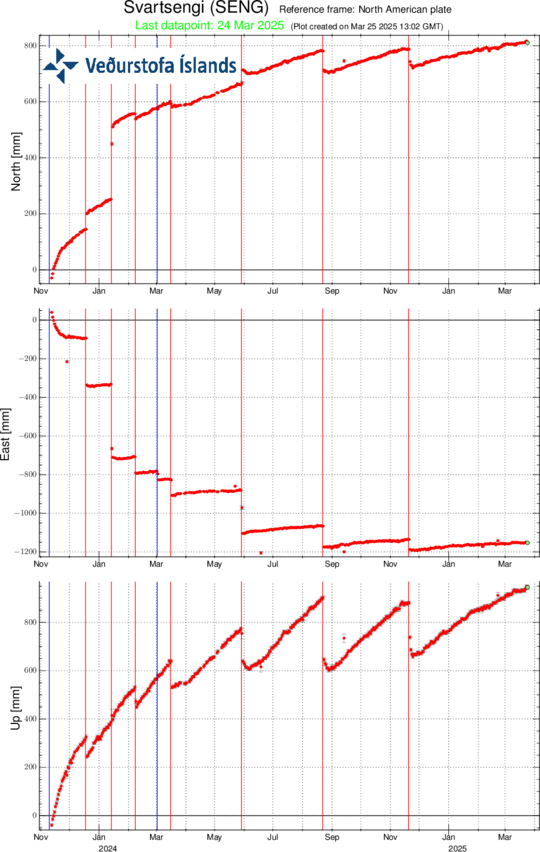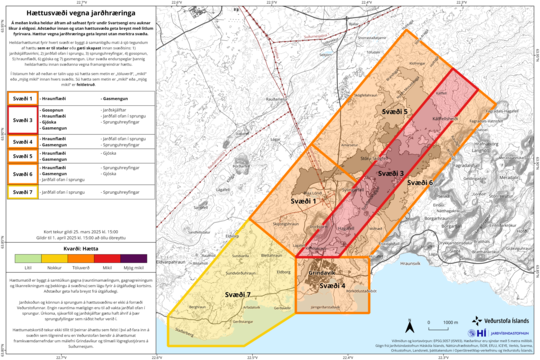- Thread starter
- #581
With a greater volume of magma down there now, if magma does break through to the surface, could the barriers hold it all back?
The Southern Volcanoes group points out a sign that's possibly hopeful in a post on Facebook (though I used Google Translate and did a screenshot for the image):
Otherwise, it's still a waiting game.
Yesterday there was a little swarm in the Sundhnuk region northeast of Grindavik, with one quake almost up to M2, but it’s quiet now on the vafri.is graphic.
The Southern Volcanoes group points out a sign that's possibly hopeful in a post on Facebook (though I used Google Translate and did a screenshot for the image):
Changed pattern in the earthquake activity?
The earthquake activity at the Sundhnúk crater series in recent weeks seems to show a slightly different pattern from what has been seen so far between eruptions in the eruption chain.
In recent weeks, the seismic activity has been occurring just east of the crater series itself. The activity is therefore somewhat parallel to the activity that was seen, for example, before the last eruption. This is clearly seen in the accompanying images, which show different periods. The first image shows the activity over the last 30 days, while the second is the activity over the last month before the last eruption, which began on November 21.
It is completely uncertain what this means and it is unlikely that much can be concluded from this changed pattern. If an eruption fissure were to open so far east, it would probably be good news for Svartsengi, as the crater series from previous eruptions would significantly restrict the flow of lava to the west.
Otherwise, it's still a waiting game.
Yesterday there was a little swarm in the Sundhnuk region northeast of Grindavik, with one quake almost up to M2, but it’s quiet now on the vafri.is graphic.






